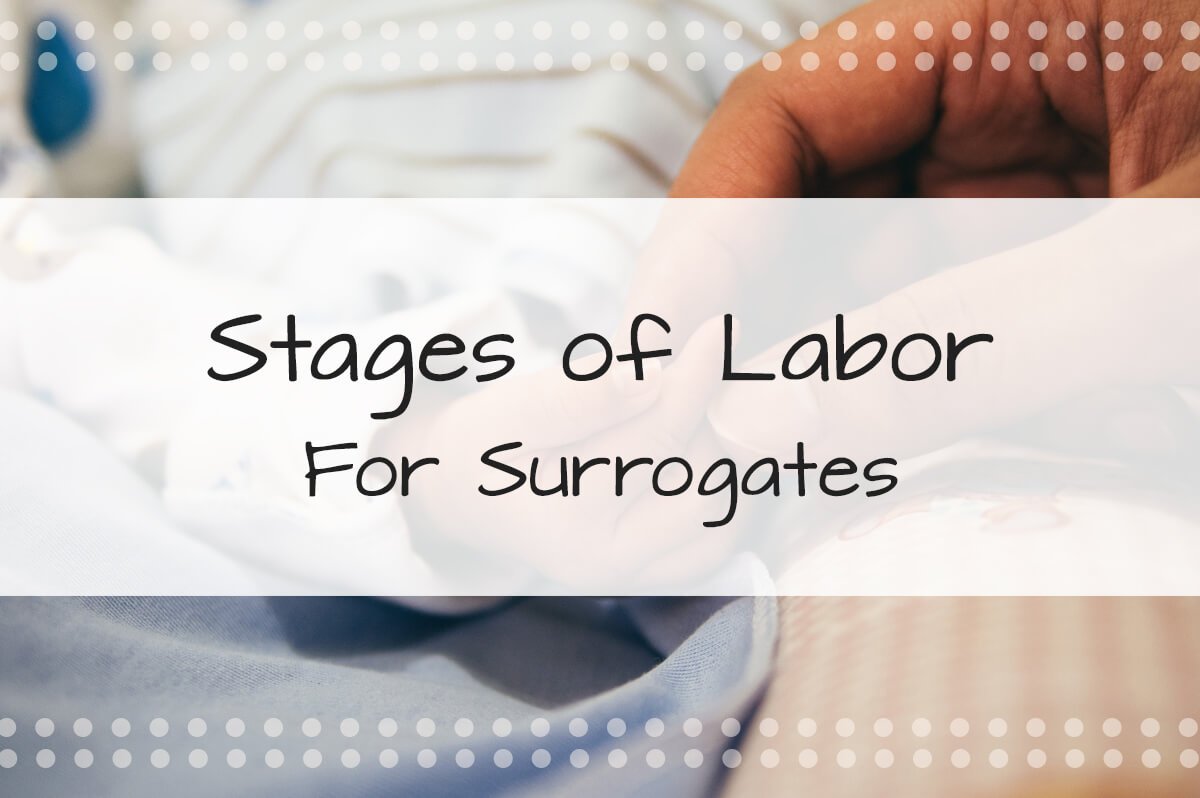
Stages of Labor for Surrogates: An Overview of the 3 Stages of Childbirth & What to Expect After Delivery
Having a baby is typically a joyful experience. For intended parents and surrogates, this long-awaited day is beyond just the usual anticipation and happy occasion.
While the actual delivery process is sometimes talked about as a painful and frightening event, first-time parents can get a more realistic expectation by learning the common stages of labor and what to expect during each of these phases.
If you’ve had a healthy pregnancy history and are interested in becoming a surrogate, contact Made In the USA Surrogacy and view our surrogate qualifications.
People considering becoming intended parents can also find informative surrogacy pregnancy information. This includes our surrogacy qualifications guidelines and up-to-date details on the required legal surrogacy pregnancy and childbirth process.
Overview of the Usual Stages of Labor
The process is known as childbirth generally occurs in three stages. This article will detail the common childbirth process for women who have had a healthy pregnancy unless otherwise stated. In most cases, the three stages of childbirth include:
- Stage 1: Occurs at the “true” onset of labor & continues until the cervix is fully dilated at 10 cm.
- Stage 2: This stage begins at fully dilated cervix 10 cm period & continues until the baby is delivered
- Stage 3: When the woman delivers the “afterbirth” or placenta
Be aware that no two pregnancies and childbirth experiences are truly identical in nature. Every woman will have some differences from the standard childbirth process.
Understanding the First Stage of Labor
For most women, the first stage of labor is generally the longest stage. This first stage is broken down into three sections, or phases, that include:
- Early Labor Phase – Begins at the onset of “true” labor & continues until the cervix is dilated at 3 cm
- Active Labor Phase – Starts at cervix dilation of 3 cm & continues until cervix dilates to 7 cm
- Transition Phase – Occurs when the cervix is at 7 cm & continues until cervix dilates to 10 cm and birth is imminent
Every woman will typically deal with a number of changing emotions and various physical changes throughout these phases. Most childbirth experts advise women to get into a physical/emotional/mental challenge mindset such as runners often do before and during a long-distance race.
There are some very helpful tips that women in labor can use to make the most of each labor phase without becoming too exhausted. Pregnant women and their support partner are encouraged to learn and then practice practical breathing and relaxation exercises during the pregnancy.
Common Expectations of Early Labor Phase:
Commonly experienced expectations of this early labor phase can include:
- The cervix begins to efface & dilates to 3 cm
- Early labor period generally lasts from 8 to 12 hours
- Mild contractions begin & first last approximately 30 to 45 seconds leaving a rest period of 5 to 30 minutes
- At first, contractions are mild, then increase in number and intensity as labor naturally progresses
- Pressure may be felt in the pelvic area or back in addition to abdominal cramping that can feel like menstrual type cramps
- The water may break – This occurs when the amniotic sac that protects the baby ruptures leaking out the fluid
The amniotic sac “or water” may break at any time usually during this first earlier labor phase, or the doctor might break the sac to hasten the childbirth process along. If the water breaks while at home, the following things should be noted:
- The time when the water broke
- Color and amount of any lost fluid
- Determine if the fluid has any odor
It is not uncommon to see blood tinged fluid with some mucus that could be purplish or blue in color. Report these findings to the medical team.
Actions to Take During Early Labor Phase
When the first contractions begin, don’t panic. Try some light household tasks to keep occupied without overdoing things and losing valuable strength. If labor pains start at night, try to sleep or at least rest. Small snacks spread out help to keep energy reserves high. Drink water or clear liquids to prevent dehydration.
Note the contraction patterns and when they become more regular in nature.
Usual Expectations of Active Labor Phase
Head to the hospital or birthing center when contractions are regular at about 5 minutes apart. Expectations include:
- Active Labor lasts 3 to 5 hours
- Cervix continues to dilate from 4 cm to 7 cm
- Contractions begin to last longer at 45 to 60 seconds long
- Rest period times between contractions lesson to just 3 to 5 minutes
- Leave for the hospital
Actions To Take During Active Labor Phase
Leave for the hospital or designated birthing place. Keep sipping water to refresh the mouth and keep hydrated, but limit food as nausea could occur. Having the designated support people around is especially important now. Support people should:
- Make sure to stay near
- Lightly massage abdomen or lower back to relieve aches
- Help laboring woman to breathe deeply and practice learned breathing exercises
- Make eye contact & give plenty of verbal praise and supportive statements
- Use distraction techniques during harder contractions
- Do relaxation techniques
- Remind her to move & change position
- Use comfort measures – pillow props, cool cloth on forehead, light massage,
- Keep abreast of contractions
- Use soothing music, distract with stories or play a card game
What to Expect During Transition Phase of Labor
This is when the support person is most effective and needed. Take this challenging phase just one contraction at a time. This is generally the fastest period of labor, and efforts to focus on breathing techniques are truly needed now. Expectations include:
- Transition phase lasts from 30 minutes to 2 hours usually
- Contractions continue more often with higher intensity lasting about 60 to 90 seconds
- Rest periods last only 30 seconds to 2 minutes
- Physical symptoms might occur like chills, sweats, nausea, vomiting, gas pains
- Mother’s focus turns inward & she might try to push. Use techniques to avoid pushing too early
- Take any emotional swings in stride, & keep conversations short
Stage Two – Delivery Stage
The delivery stage is when the mother should begin to push during contractions. Simplify and amp up verbal prompts to breathe, push, relax, etc. Keep up with comfort measures too. Most childbirth preparation classes advise first-timers to watch a birth video beforehand.
Stage Three – Placenta Delivery
The third stage of childbirth is when the placenta is delivered. Uterine massage is sometimes performed here. This is also explained in pre-delivery childbirth preparation videos.
Desire to Become a Surrogate?

If you are a woman who has already experienced a healthy pregnancy and are thinking of becoming a surrogate, please fill out our form here.
